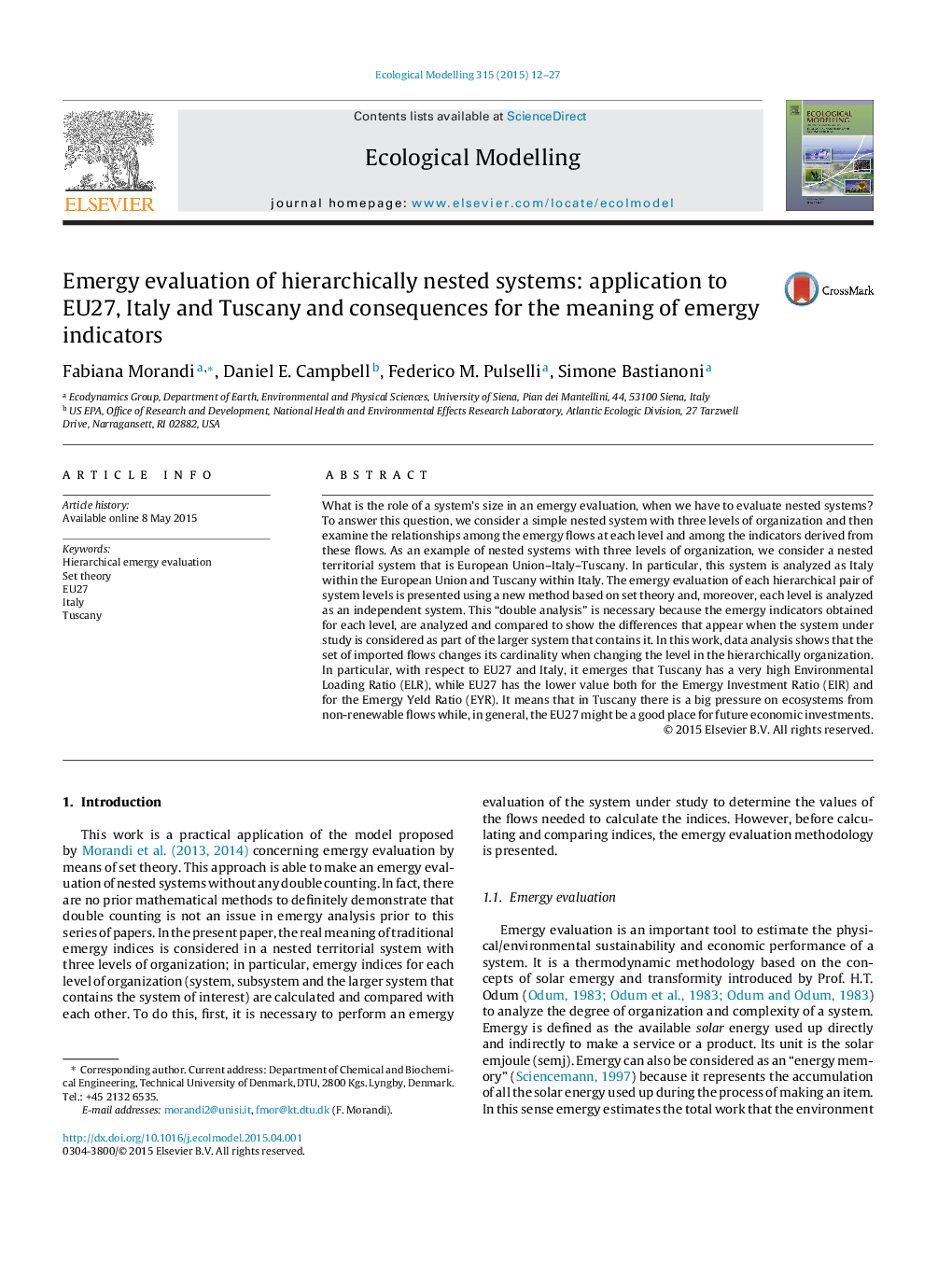| Article ID | Journal | Published Year | Pages | File Type |
|---|---|---|---|---|
| 4375643 | Ecological Modelling | 2015 | 16 Pages |
•The role of a system's size in the emergy evaluation of a nested system.•Emergy evaluation of the nested system EU27–Italy–Tuscany based on set theory.•Traditional emergy indices in a nested system with three levels of organization.•Relationships between emergy indices at each level of organization.
What is the role of a system's size in an emergy evaluation, when we have to evaluate nested systems? To answer this question, we consider a simple nested system with three levels of organization and then examine the relationships among the emergy flows at each level and among the indicators derived from these flows. As an example of nested systems with three levels of organization, we consider a nested territorial system that is European Union–Italy–Tuscany. In particular, this system is analyzed as Italy within the European Union and Tuscany within Italy. The emergy evaluation of each hierarchical pair of system levels is presented using a new method based on set theory and, moreover, each level is analyzed as an independent system. This “double analysis” is necessary because the emergy indicators obtained for each level, are analyzed and compared to show the differences that appear when the system under study is considered as part of the larger system that contains it. In this work, data analysis shows that the set of imported flows changes its cardinality when changing the level in the hierarchically organization. In particular, with respect to EU27 and Italy, it emerges that Tuscany has a very high Environmental Loading Ratio (ELR), while EU27 has the lower value both for the Emergy Investment Ratio (EIR) and for the Emergy Yeld Ratio (EYR). It means that in Tuscany there is a big pressure on ecosystems from non-renewable flows while, in general, the EU27 might be a good place for future economic investments.
